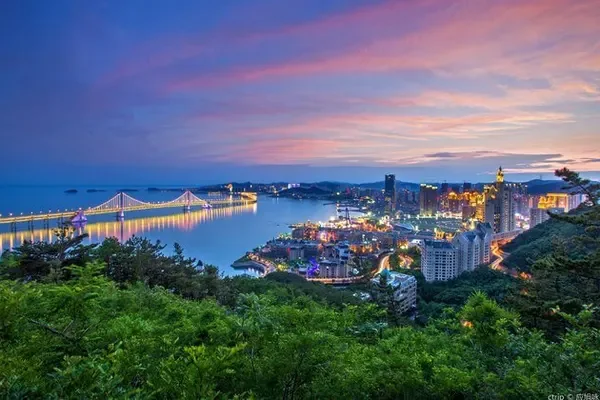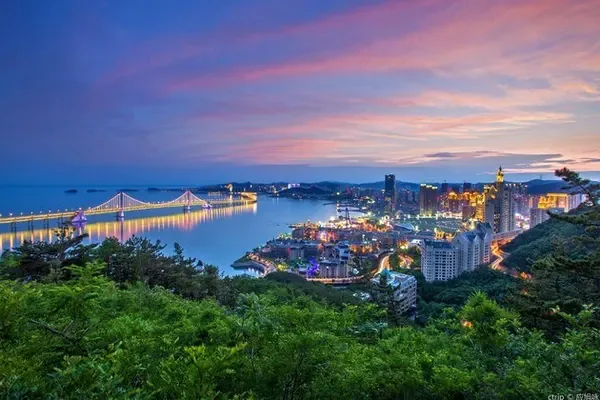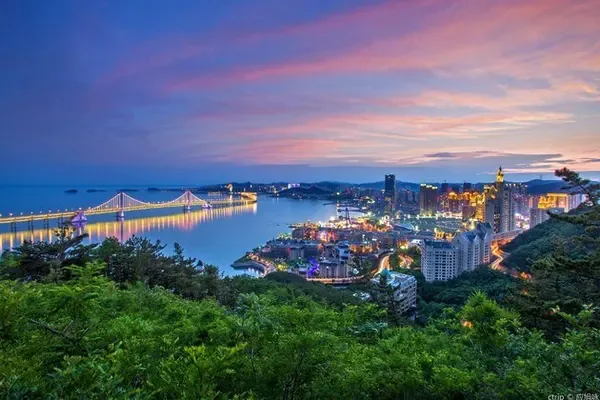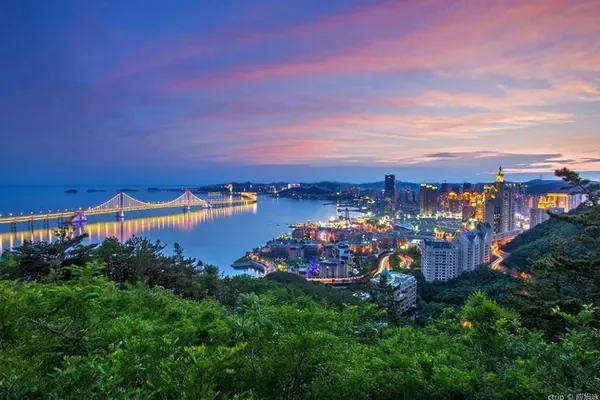There are many water towns in the south of the Yangtze River, such as Zhouzhuang and Tongli in Jiangsu; Wuzhen, Xitang, Nanxun, Shaoxing in Zhejiang, etc. In October 2005, the last stop of the reporter's self-driving trip to the south of the Yangtze River with Beijing Love Car was Wuzhen and Nanxun Ancient Town in Zhejiang. Based on the actual situation of the entire itinerary, these two water towns with different styles were carefully planned and selected, which made the riders feel that the trip was worthwhile after sightseeing.

In the early morning of October 5, 2005, the convoy left Shaoxing for Wuzhen. The rainy weather is still not getting better. Rider Li Ruicheng, who was the driver of the publicity car, joked to the reporter that he didn't look up to the calendar when he came out, and only then did he catch up with the continuous rain for five consecutive days. After more than two hours of travel, the convoy arrived in Wuzhen Water Village, Tongxiang City in the drizzle.

Tongxiang is located in the west of Jiaxing City, Zhejiang Province, where Shanghai, Suzhou and Hangzhou meet land and water, with an area of 723 square kilometers and a population of 640,000. The Jiangnan ancient canal runs obliquely through the whole area, making it a typical Jiangnan water town. National Highway 320 and Shanghai-Hangzhou Expressway both pass through it.

Tongxiang is not only famous for its developed economy, but also famous both at home and abroad for being a cultural state where celebrities gather. The construction of celebrity culture based on the famous ancient town of Wuzhen in the south of the Yangtze River and the four "Golden Phoenixes" has become the characteristic and advantage of Tongxiang's tourism culture.

Wuzhen, a water town, is located at the northern end of Tongxiang City, bordering Huzhou City in the west and Wujiang County in Jiangsu Province in the north. The county-level highway Yaozhen Line runs through the town, and through Yaozhen Highway, it can be connected with the provincial highway Yanhu Highway, national highway 320, 318 highway, and Shanghai-Hangzhou Expressway.

Wuzhen is 13 kilometers away from Tongxiang City, 27 kilometers away from Jiaxing, Huzhou and Wujiang respectively, 27 kilometers away, 45 kilometers away, and 60 kilometers away from Wujiang City. It is 80 kilometers away from Hangzhou and Suzhou and 140 kilometers away from Shanghai.

Wuzhen has a town history of more than 1300 years and is one of the ten famous historical and cultural towns in China. Wuzhen has been prosperous since ancient times. For thousands of years, the houses in the ancient town were built along the river, and the city was surrounded by bridges. The folk customs in the town are simple and simple. The water building - Water Pavilion, Wuzhen is also known as "the last house in China that rests on water".

Wuzhen has a long history and is a typical Jiangnan cultural ancient town. Wuzhen Water Town has a complete style and features, maintaining a complete pattern of Jiangnan Water Town. Wuzhen is rich in folk customs and is a living fossil museum reflecting the life of the water town in the south of the Yangtze River. With rapid economic development, Wuzhen is a well-known and prosperous town in the Yangtze River Delta.

In 2001, Wuzhen was included in the World Cultural Heritage Preparatory List; in 2002, it was awarded the title of National AAAA-level Scenic Spot; in 2004, it was named as one of the first batch of China’s Top Ten Historical and Cultural Towns by the State Administration of Cultural Heritage of the Ministry of Construction, and was listed among the Top Ten Most Popular Towns in Zhejiang Province It ranks first among tourist attractions and won the "Outstanding Achievement Award for Heritage Protection in the Asia-Pacific Region in 2003" issued by the United Nations; Wuzhen has been selected into the list of key scenic spots for China's "Golden Week" holiday tourism forecast and statistics for four consecutive years. Wuzhen is gradually growing into a world-class tourism brand.

Walking into the Wuzhen Scenic Area, the unique features of the Jiangnan water town will be displayed in front of people's eyes immediately. In the narrow and long waterway hidden in the shade of greenery, there are endless boats going back and forth. Tourists enjoy the customs of the water town comfortably in the boat. On one side along the river are old houses built by the water; on the other side is a stone road facing the water. Not far away there will be a small bridge across the two banks. Standing on the small bridges with different architectural shapes and looking around, the unique water town features are like beautiful pictures that fascinate people.

In the water towns of the south of the Yangtze River, there are many ancient towns like Wuzhen, which are as beautiful and peaceful as pearls. In addition to the small bridges, flowing water, people's water town style and exquisite and elegant residential buildings that everyone has in Wuzhen, there is also a strong historical and cultural atmosphere. This may be the reason why it has the longest history and the most developed culture.

Wuzhen not only has a beautiful water town scenery, well-preserved Ming and Qing architecture, but also gave birth to a generation of writer Mao Dun. The former residence of Mao Dun is the old house where the ancestors of the revolutionary writer Mao Dun (Shen Yanbing) lived. It was built in the middle of the 19th century, with a construction area of 650 square meters. It was a residence in the south of the Yangtze River in the Qing Dynasty.

Opposite Mao Dun's former residence is Lin's shop. Back in 1959, Beijing Film Studio adapted Xia Yan based on Mao Dun's work; "The Shop of the Lin Family" filmed by director Shui Hua left a very deep impression on the reporter. And my childhood perception of Jiangnan Water Town also comes from this movie. When I came here decades later, looking at the real Lin's shop in front of me, although it is different from the scene in the movie, it still made the reporter have an indescribable special feeling for this place.

It's a pity that the tourism boom during the National Day Golden Week has made this place full of tourists. The narrow streets and alleys are crowded with tourists visiting and shopping. Squeezing into the former residence of Mao Dun, following the crowded flow of people, I finally paid my respects to the former residence of the literary master in a relatively complete way.

It is understood that Mao Dun lived here for thirteen springs and autumns from his birth on July 4, 1896 to the spring of 1910 when he left his hometown to study. Mao Dun's former residence has a study designed and renovated by Mao Dun in 1934, hand-planted bamboos and palms. It was listed as a provincial cultural relic protection unit in 1982, prepared for restoration in August 1983, completed and opened in July 1985, and announced as a national key cultural relic protection unit in January 1988.

After the opening, the ancillary buildings and exhibition halls have been expanded successively, with a total construction area of 1731.5 square meters. In August 1994, it was renamed Tongxiang Mao Dun Memorial Hall. )" three basic displays. The former residence is adjacent to Mao Dun's alma mater Lizhi Academy, which is now changed to Mao Dun Memorial Hall.

The former residence of Mao Dun, together with Xiuzhenguan Theater, Ginkgo biloba in Tang Dynasty, Zhaoming Study Room and Wuzhen Water Town style, are integrated into a vivid dictionary of Mao Dun's research. The reporter thought that Mao Dun's former residence must be seen when traveling in Wuzhen.

In the water town of Wuzhen, there are a dizzying array of distinctive snacks and native products. Looking at the handbags and pouches, such as sister-in-law cakes, Koukouxiang, rose crisps, peanut crisps, black hemp crisps, etc.; happy car lovers, it can be seen that purchasing local specialties with folk customs here must be very happy.

It is reported that the tourism brand of Wuzhen Water Town has also developed a unique and novel promotion method in the national tourism market. They used the form of tourist caravans to show people the unique charm of Wuzhen, a water town, through vivid pictures of Wuzhen Water Town on the car.

Gao Yuping, the sales manager of Wuzhen Tourism Development Company at the time, told the reporter: "No matter which big city our tourist caravan goes to, those pictures of water villages with strong visual impact will attract many tourists to stop and watch. Today , our tourist caravan has been to many places in Jiangsu and Zhejiang, as well as Beijing, the three northeastern provinces, and Guilin in Guangxi. We hope that through this intuitive way of publicity and promotion, tourists from all over the country can gradually understand the beauty of our water town Wuzhen characteristics. So we can also make some contribution to promote the development of tourism.” (Photo: Feng Ganyong)



